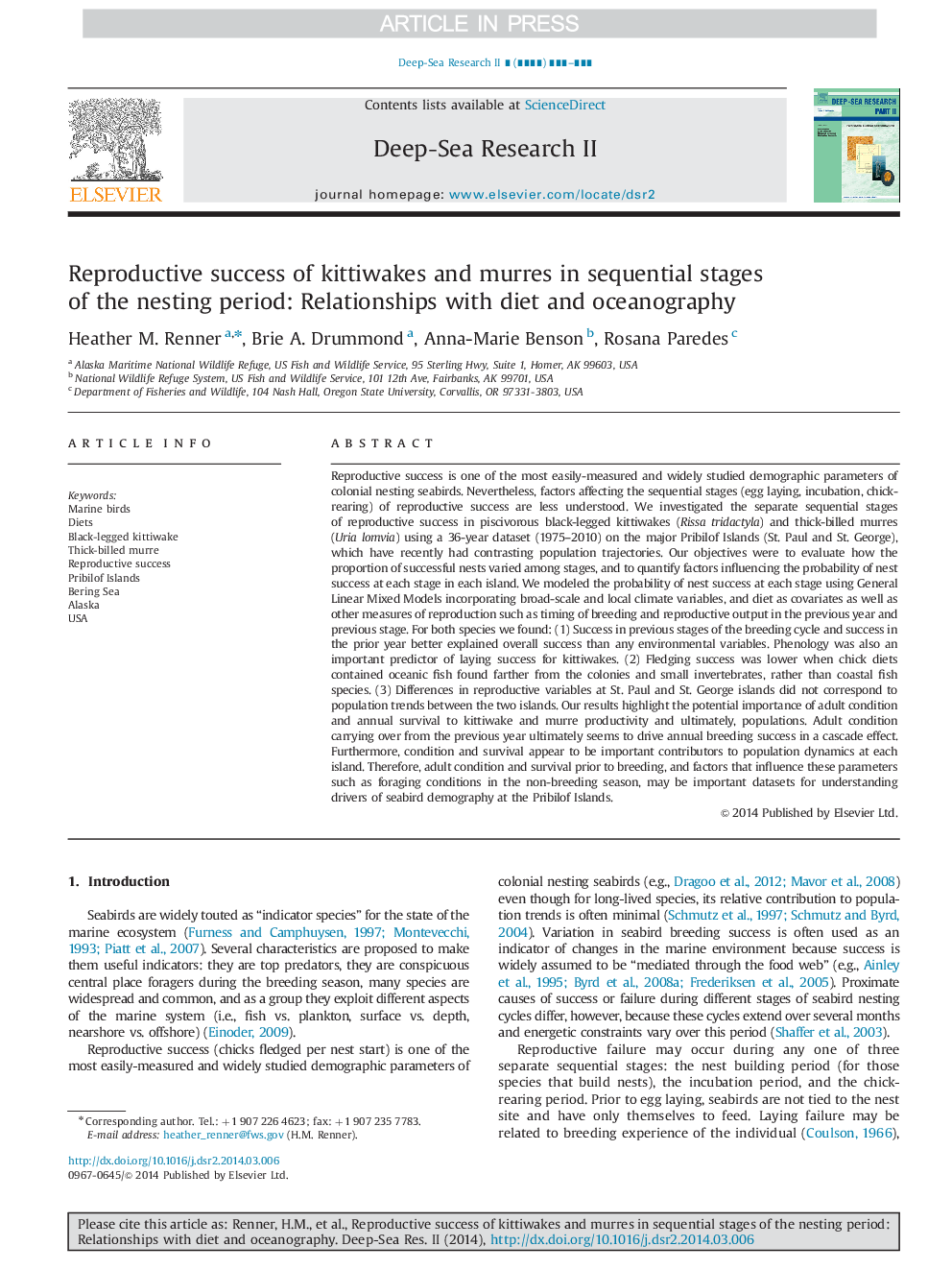| کد مقاله | کد نشریه | سال انتشار | مقاله انگلیسی | نسخه تمام متن |
|---|---|---|---|---|
| 6384191 | 1626431 | 2014 | 15 صفحه PDF | دانلود رایگان |
عنوان انگلیسی مقاله ISI
Reproductive success of kittiwakes and murres in sequential stages of the nesting period: Relationships with diet and oceanography
ترجمه فارسی عنوان
موفقیت تولید مثل در کت و ماته ها در مراحل متوالی دوره لانه سازی: ارتباط با رژیم غذایی و اقیانوس شناسی
دانلود مقاله + سفارش ترجمه
دانلود مقاله ISI انگلیسی
رایگان برای ایرانیان
کلمات کلیدی
موضوعات مرتبط
مهندسی و علوم پایه
علوم زمین و سیارات
زمین شناسی
چکیده انگلیسی
Reproductive success is one of the most easily-measured and widely studied demographic parameters of colonial nesting seabirds. Nevertheless, factors affecting the sequential stages (egg laying, incubation, chick-rearing) of reproductive success are less understood. We investigated the separate sequential stages of reproductive success in piscivorous black-legged kittiwakes (Rissa tridactyla) and thick-billed murres (Uria lomvia) using a 36-year dataset (1975-2010) on the major Pribilof Islands (St. Paul and St. George), which have recently had contrasting population trajectories. Our objectives were to evaluate how the proportion of successful nests varied among stages, and to quantify factors influencing the probability of nest success at each stage in each island. We modeled the probability of nest success at each stage using General Linear Mixed Models incorporating broad-scale and local climate variables, and diet as covariates as well as other measures of reproduction such as timing of breeding and reproductive output in the previous year and previous stage. For both species we found: (1) Success in previous stages of the breeding cycle and success in the prior year better explained overall success than any environmental variables. Phenology was also an important predictor of laying success for kittiwakes. (2) Fledging success was lower when chick diets contained oceanic fish found farther from the colonies and small invertebrates, rather than coastal fish species. (3) Differences in reproductive variables at St. Paul and St. George islands did not correspond to population trends between the two islands. Our results highlight the potential importance of adult condition and annual survival to kittiwake and murre productivity and ultimately, populations. Adult condition carrying over from the previous year ultimately seems to drive annual breeding success in a cascade effect. Furthermore, condition and survival appear to be important contributors to population dynamics at each island. Therefore, adult condition and survival prior to breeding, and factors that influence these parameters such as foraging conditions in the non-breeding season, may be important datasets for understanding drivers of seabird demography at the Pribilof Islands.
ناشر
Database: Elsevier - ScienceDirect (ساینس دایرکت)
Journal: Deep Sea Research Part II: Topical Studies in Oceanography - Volume 109, November 2014, Pages 251-265
Journal: Deep Sea Research Part II: Topical Studies in Oceanography - Volume 109, November 2014, Pages 251-265
نویسندگان
Heather M. Renner, Brie A. Drummond, Anna-Marie Benson, Rosana Paredes,
